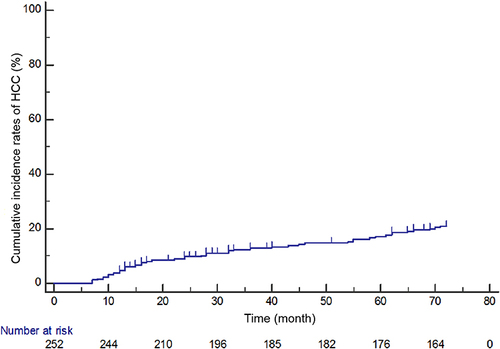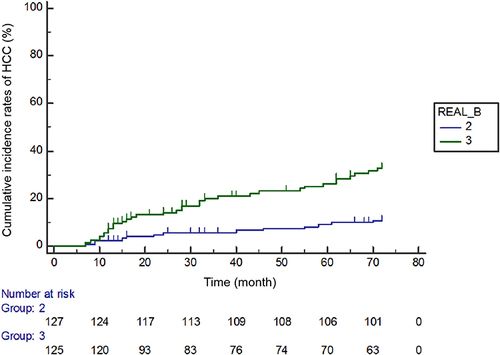Figures & data
Table 1 Baseline Characteristics of Patients with HBV-Related Cirrhosis
Table 2 Univariate and Multivariate Analyses of Predictive Factors Associated with HCC
Table 3 Discrimination of the Prognostic Models
Figure 2 Time-dependent area under the receiver operating characteristic curves (AUROCs) for predicting hepatocellular carcinoma development; (A) time-dependent AUROCs for predicting hepatocellular carcinoma development at 1 year; (B) time-dependent AUROCs for predicting hepatocellular carcinoma development at 3 years; (C) time-dependent AUROCs for predicting hepatocellular carcinoma development at 5 years.

Table 4 Changes in Factors Constituting HCC Prediction Model
Table 5 Changes in Prediction Model of HCC


